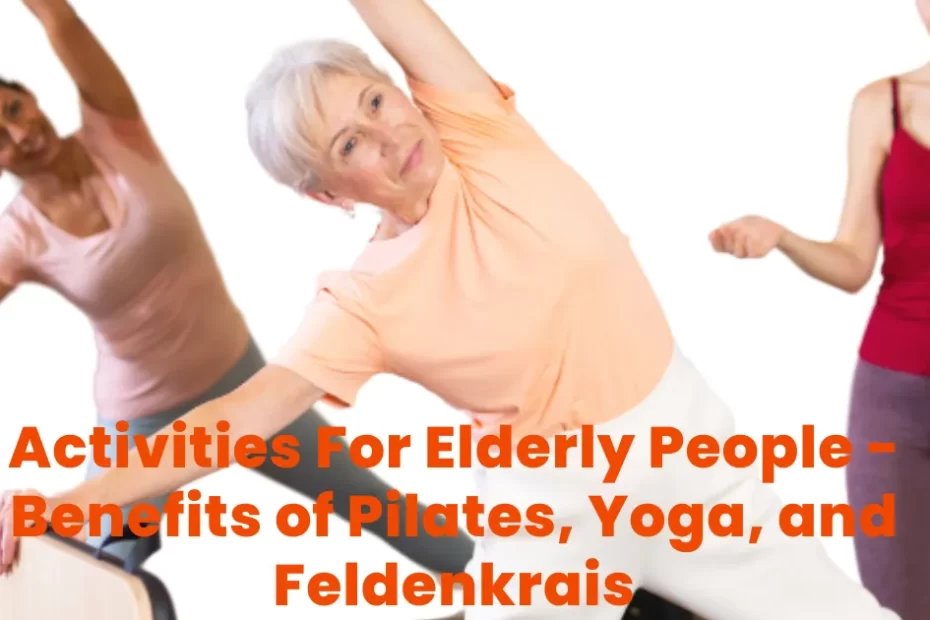Activities For Elderly People: As we age, maintaining flexibility, strength, and overall well-being becomes increasingly important for leading a fulfilling and active lifestyle. Fortunately, gentle movement practices like Pilates, Yoga, and Feldenkrais offer numerous benefits for seniors, promoting physical health, mental well-being, and relaxation. In this guide, we’ll delve into the advantages of each practice, discuss their suitability for beginners, and provide tips for getting started safely.
What Are The Contraindications For Pilates, Yoga, And Feldenkrais For Seniors?
Activities For Elderly People – Benefits of Pilates, Yoga, and Feldenkrais for Seniors
1. Improving Flexibility and Mobility:
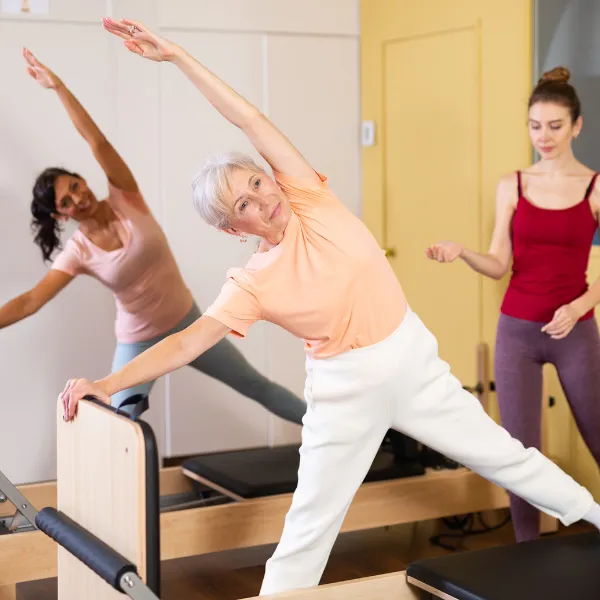
Pilates For Seniors:
Pilates focuses on improving flexibility and mobility through controlled movements and stretches. It targets specific muscle groups, helping seniors maintain their range of motion and prevent stiffness.
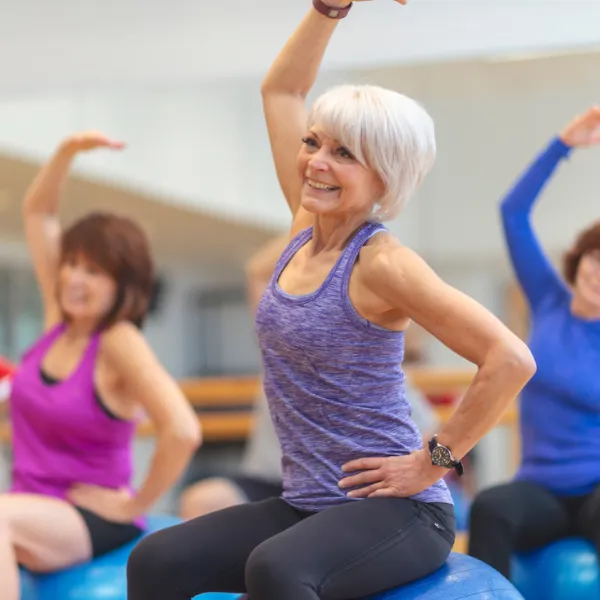
Yoga For Older Adults:
Yoga incorporates gentle stretching and poses that lengthen and strengthen muscles, improving flexibility and joint mobility. It also promotes balance and coordination, which are crucial for preventing falls.
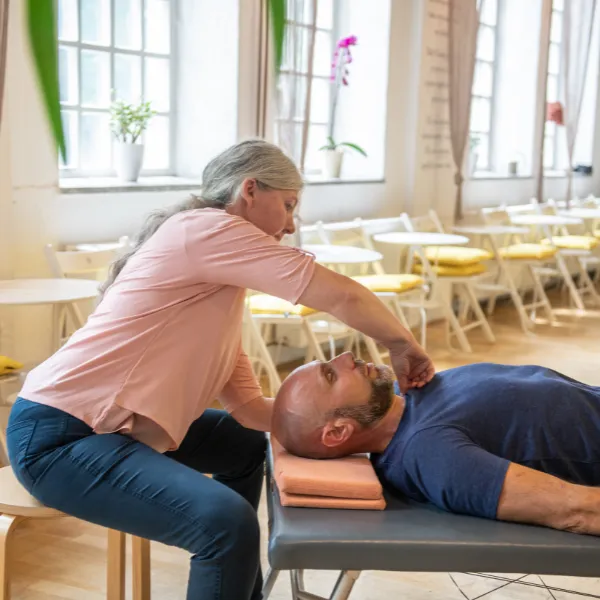
Feldenkrais Exercises:
Feldenkrais emphasizes awareness of movement patterns and focuses on gentle, mindful movements to increase flexibility and reduce tension in the body. It can help seniors move with greater ease and fluidity.
2. Building Strength and Muscle Tone:
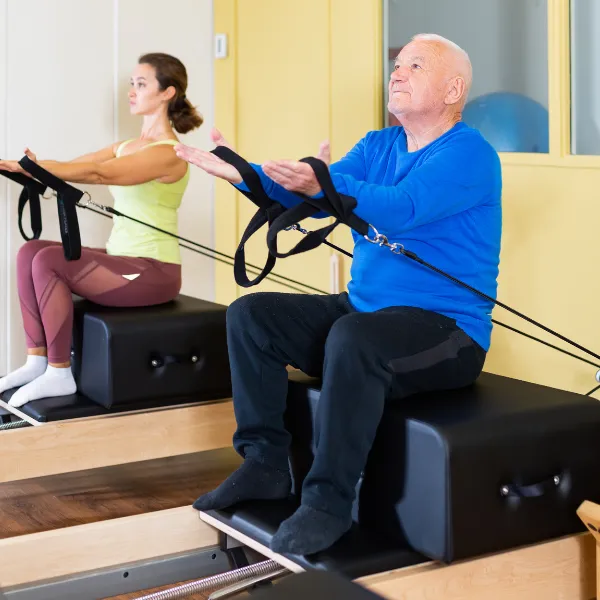
Pilates For Seniors:
Pilates utilizes resistance training with specialized equipment or bodyweight exercises to build strength, particularly in the core muscles. This can improve stability, posture, and overall strength, which is essential for maintaining independence as we age.
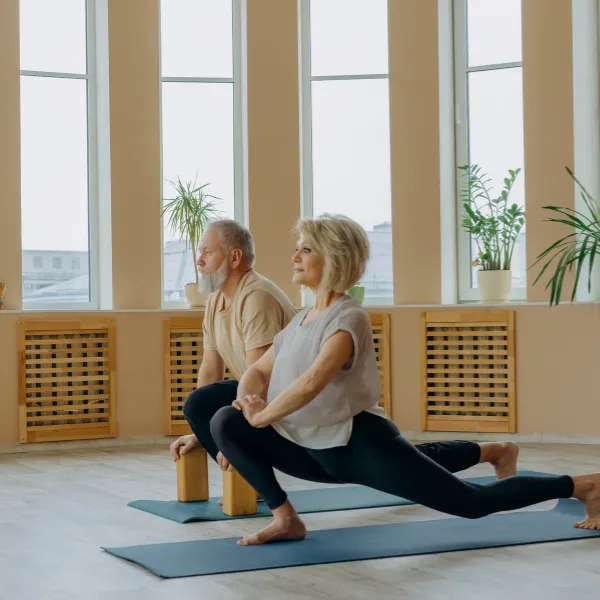
Yoga For Older Adults:
Yoga incorporates poses that engage various muscle groups, promoting strength and muscle tone throughout the body. Standing poses, balances, and gentle flows can help seniors build strength gradually.
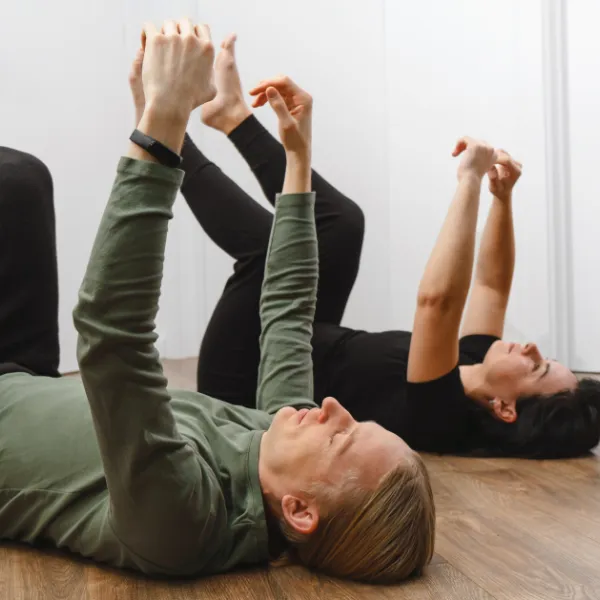
Feldenkrais Exercises:
Feldenkrais emphasizes the connection between the brain and body, promoting efficient movement patterns and muscle activation. While not primarily focused on strength-building, it can improve muscle tone and coordination over time.
3. Enhancing Overall Well-being:
- Pilates, Yoga, and Feldenkrais all offer mental and emotional benefits beyond physical fitness. These practices promote relaxation, stress reduction, and a sense of well-being by encouraging mindfulness and presence in the moment.
- Regular practice can reduce anxiety, improve mood, and enhance the quality of sleep, leading to a greater sense of overall wellness and vitality.
Differences Between Pilates, Yoga, and Feldenkrais
Pilates:
- Pilates is a low-impact exercise method that focuses on strengthening the core muscles, improving posture, and enhancing flexibility.
- It often involves the use of specialized equipment such as reformers, Cadillacs, and stability balls, but can also be performed using only bodyweight exercises.
- Pilates exercises are typically performed in a slow, controlled manner, with an emphasis on proper alignment and breathing techniques.
Yoga:
- Yoga encompasses a variety of practices, including physical postures (asanas), breathwork (pranayama), meditation, and relaxation techniques.
- It emphasizes the connection between mind, body, and breath, promoting balance, flexibility, and inner peace.
- Yoga classes may range from gentle and restorative to more vigorous and dynamic, catering to different needs and abilities.
Feldenkrais:
- Feldenkrais is a gentle movement method that focuses on improving awareness, coordination, and efficiency of movement.
- It involves exploring subtle movements and sensations to release tension, reduce pain, and improve overall movement quality.
- Feldenkrais lessons can be done either in a group setting or through individual sessions with a certified practitioner, known as Functional Integration.
Suitability for Beginners:
Pilates:
- Pilates can be suitable for beginners, especially those looking to improve core strength, flexibility, and posture.
- Beginners may start with mat-based Pilates classes, which require minimal equipment and focus on foundational exercises before progressing to more advanced techniques.
Yoga:
- Yoga offers a wide range of classes suitable for beginners, including gentle, chair, and restorative yoga. These classes focus on basic poses, breathwork, and relaxation techniques.
- Beginners should look for classes labeled as “beginner-friendly” or “gentle,” and communicate any injuries or limitations to the instructor for modifications.
Feldenkrais:
- Feldenkrais is accessible to beginners of all ages and fitness levels, as it emphasizes gentle, exploratory movement rather than physical exertion.
- Beginners can start with group classes or private sessions led by a certified Feldenkrais practitioner, who will guide them through gentle movements and awareness exercises.
Activities For Elderly People – Tips for Starting:
- Start Slowly: Begin with shorter sessions and gradually increase the duration and intensity as your strength and flexibility improve.
- Listen to Your Body: Pay attention to how your body feels during and after each practice, and modify exercises as needed to avoid strain or discomfort.
- Stay Consistent: Aim to practice regularly, even if it’s just a few minutes each day. Consistency is key to seeing improvements in flexibility, strength, and overall well-being.
- Find the Right Class: Look for classes specifically tailored to seniors or beginners, and don’t be afraid to try different styles and instructors to find what works best for you.
- Seek Professional Guidance: Consider working with a certified instructor or physical therapist, especially if you have specific health concerns or mobility issues.
Activities For Elderly People – Safety Considerations:
- Consult Your Doctor: Before starting any new exercise program, especially if you have pre-existing health conditions or injuries, it’s important to consult with your doctor or healthcare provider.
- Listen to Your Body: If you experience pain or discomfort during a practice, stop immediately and consult a professional for guidance.
- Use Props and Modifications: Don’t hesitate to use props such as blocks, straps, or chairs to support your practice, and ask your instructor for modifications if needed.
- Stay Hydrated: Drink plenty of water before, during, and after your practice to stay hydrated, especially if you’re exercising in a warm environment.
- Practice Mindfully: Pay attention to proper alignment and technique, and avoid pushing yourself beyond your limits. Remember, it’s not about how deep you can stretch or how long you can hold a pose, but about cultivating awareness and listening to your body.
Integrating Practices into Daily Routines:
Integrating Pilates, Yoga, or Feldenkrais into your daily routine can enhance your overall well-being and ensure consistent progress in your practice. Here are some practical tips for incorporating these practices into your daily life:
- Set Aside Dedicated Time: Schedule specific times for your practice each day. Whether it’s in the morning to energize your day or in the evening to unwind, consistency is key to making it a habit.
- Start Small: Begin with short sessions, even just 10-15 minutes a day, and gradually increase the duration as you become more comfortable with the practice. Remember, consistency is more important than duration.
- Combine Practices: Mix and match Pilates, Yoga, and Feldenkrais based on your preferences and goals. For example, you might start your day with a brief Feldenkrais movement exploration, followed by a Yoga session in the afternoon, and end the day with a Pilates mat workout.
- Create a Dedicated Space: Designate a quiet, clutter-free area in your home where you can practice comfortably. Keep your yoga mat, props, and any other equipment you need readily accessible to eliminate barriers to practice.
- Make it Enjoyable: Choose practices and activities that you enjoy and look forward to. Experiment with different styles, instructors, and formats until you find what resonates with you.
- Involve Others: Invite friends or family members to join you in your practice. Sharing the experience can make it more enjoyable and motivate you to stay committed.
- Set Realistic Goals: Be realistic about what you can achieve within your current lifestyle and commitments. Instead of aiming for perfection, focus on progress and consistency.
- Be Flexible: Life can be unpredictable, and there will be days when you may not be able to stick to your planned practice. Be flexible and adapt your routine as needed without feeling guilty.
- Mindful Movement Throughout the Day: Incorporate mindful movement into your daily activities, such as practicing deep breathing while walking, stretching during breaks at work, or practicing mindfulness while doing household chores.
- Track Your Progress: Keep a journal to track your progress, jot down any insights or observations, and celebrate your achievements along the way. Seeing how far you’ve come can be a powerful motivator to keep going.
Remember, the key is to find a routine that works for you and fits seamlessly into your lifestyle. By integrating Pilates, Yoga, or Feldenkrais into your daily routine, you can reap the physical, mental, and emotional benefits of these practices and enjoy a healthier, more balanced life.
